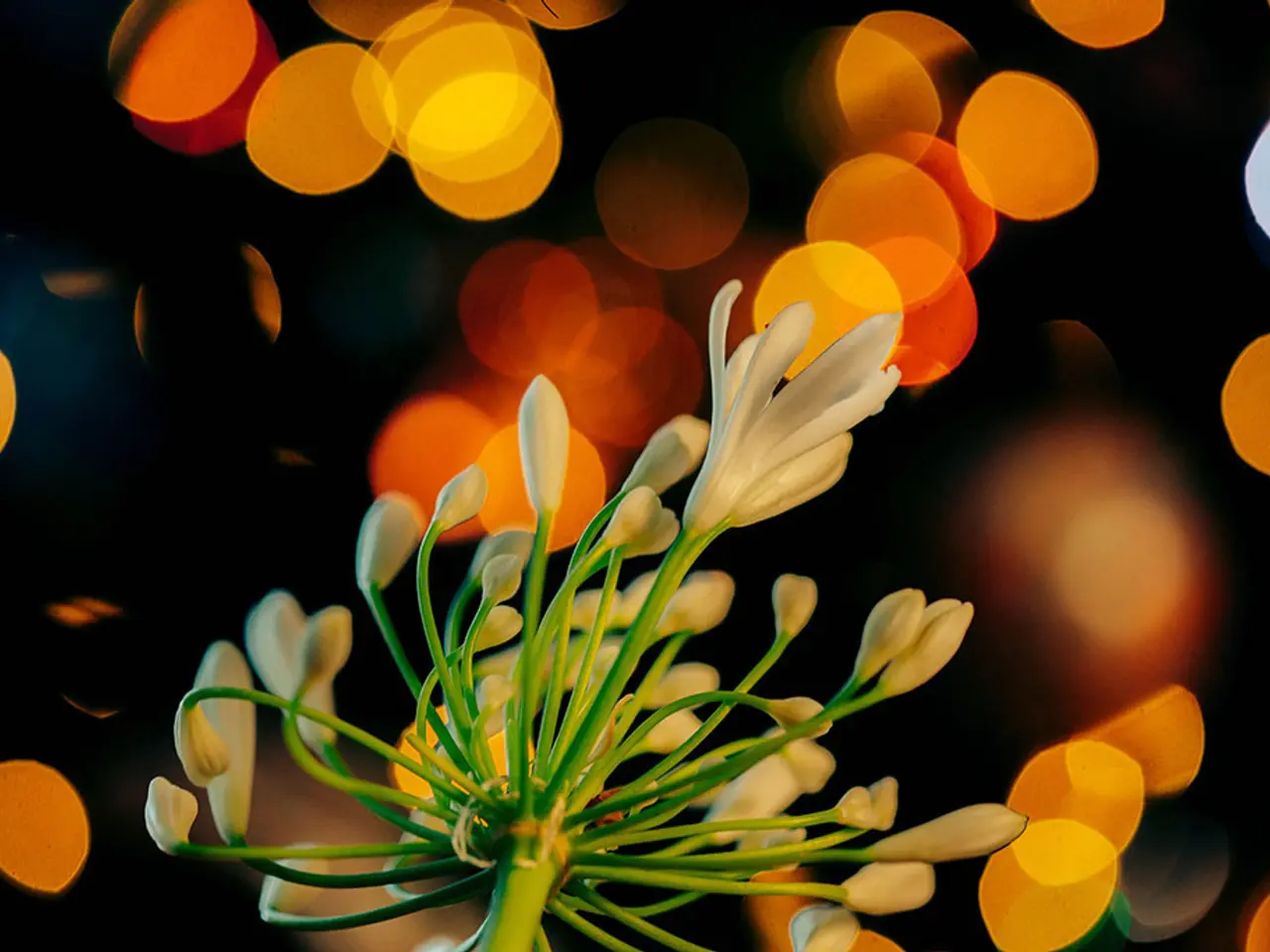Guide for Conducting Personal Biology Investigation in IB: A Detailed Example to Lead Your Inquiry
=====================================================================================================
In an Internal Assessment (IA) for IB Biology, students have the opportunity to conduct an original scientific investigation. One such investigation by a group of students focused on the effect of varying light intensity on the rate of photosynthesis in Elodea canadensis, an aquatic plant.
The experiment was carefully designed with a controlled environment to ensure accurate results. The independent variable, light intensity, was measured using a lux meter at distances of 10cm, 20cm, 30cm, 40cm, and 50cm from the light source. The controlled variables were maintained at consistent levels, including temperature, concentration of sodium bicarbonate (CO2 source), length of pondweed, and water volume.
Each measurement was repeated three times for reliability, and the experiment measured the rate of photosynthesis by counting oxygen bubbles released per minute. The data collected showed a decrease in photosynthesis rate as light intensity decreased.
The graph of bubbles per minute versus light intensity was used to analyse the data, revealing a positive correlation between light intensity and photosynthesis rate, up to a point where a plateau phase wasn't reached. This finding supports the hypothesis that increasing light intensity will increase the rate of photosynthesis up to a point, after which it will plateau due to other limiting factors.
The strengths of the experiment included controlled variables and repeated trials for accuracy. However, the experiment had limitations such as counting bubbles as a proxy for oxygen production, ambient light affecting results, and temperature not being strictly controlled.
Possible improvements for future experiments include using a gas syringe for more accurate oxygen measurement, controlling temperature more rigorously, and measuring light intensity directly with a lux meter.
In conclusion, this IA provides a valuable insight into the effect of light intensity on the rate of photosynthesis in Elodea canadensis. The findings support the hypothesis and highlight the importance of controlled experiments for accurate scientific investigation.
Materials
- Fresh Elodea canadensis specimens (aquatic plant)
- Light source (adjustable lamp or LED light with variable intensity)
- Lux meter or light meter to measure light intensity accurately
- Beaker/tank with water (dechlorinated or distilled)
- Stopwatch or timer
- Sodium bicarbonate (baking soda) for dissolved CO2 source
- Thermometer
- Ruler or measuring tape (to fix distance of light source)
- Optional: oxygen sensor or inverted funnel and test tube setup to collect oxygen bubbles
Method
- Preparation: Place a sprig of Elodea in a beaker filled with water containing a known concentration of sodium bicarbonate to ensure CO2 availability.
- Light intensity variation: Position the light source at different distances from the plant to create a range of light intensities (e.g., 10 cm, 20 cm, 30 cm, 40 cm).
- Measurement: Use the lux meter to record light intensity at each distance to have quantitative data.
- Data collection: For each light intensity:
- Allow the plant to acclimate for a few minutes.
- Measure the rate of photosynthesis by counting the number of oxygen bubbles produced per minute or, more accurately, by collecting oxygen gas volume over a fixed time.
- Repeat measurements multiple times for reliability.
- Control variables: Keep temperature constant, water volume the same, use the same plant size/specimen, and maintain consistent CO2 levels (bicarbonate concentration).
- Repeat for multiple trials to improve data validity.
Analysis
- Plot the rate of photosynthesis (oxygen bubbles/minute or O2 volume) against light intensity (lux).
- Expect a positive correlation at lower intensities, with possible plateau at higher intensities where light is no longer the limiting factor.
- Calculate averages, standard deviations, and possibly conduct a regression analysis to quantify the relationship.
Evaluation
- Discuss sources of error like inconsistent bubble size, temperature fluctuations, or inaccurate light intensity measurements.
- Consider the effect of other limiting factors like CO2 or temperature.
- Suggest improvements such as using an oxygen sensor for more precise measurement or controlling temperature better.
- Reflect on biological variability between Elodea samples.
- Address any anomalies or unexpected trends and speculate on causes.
This framework follows standard plant physiology experimental design for photosynthesis and aligns with assessment criteria focusing on clarity, scientific method, data presentation, and critical evaluation expected in an IB Biology IA.
In the realm of science and health-and-wellness, this experimental design proves beneficial for education-and-self-development, particularly in the context of IB Biology. By focusing on fitness-and-exercise for the Elodea canadensis aquatic plant, students can appreciate the correlation between light intensity and photosynthesis rate, which helps combine concepts from multiple domains, such as biology, physics, and chemistry. The detailed materials, method, analysis, and evaluation sections offer guidance for further scientific investigation, thereby promoting lifelong learning and critical thinking in health-and-wellness, science, and education-and-self-development.




